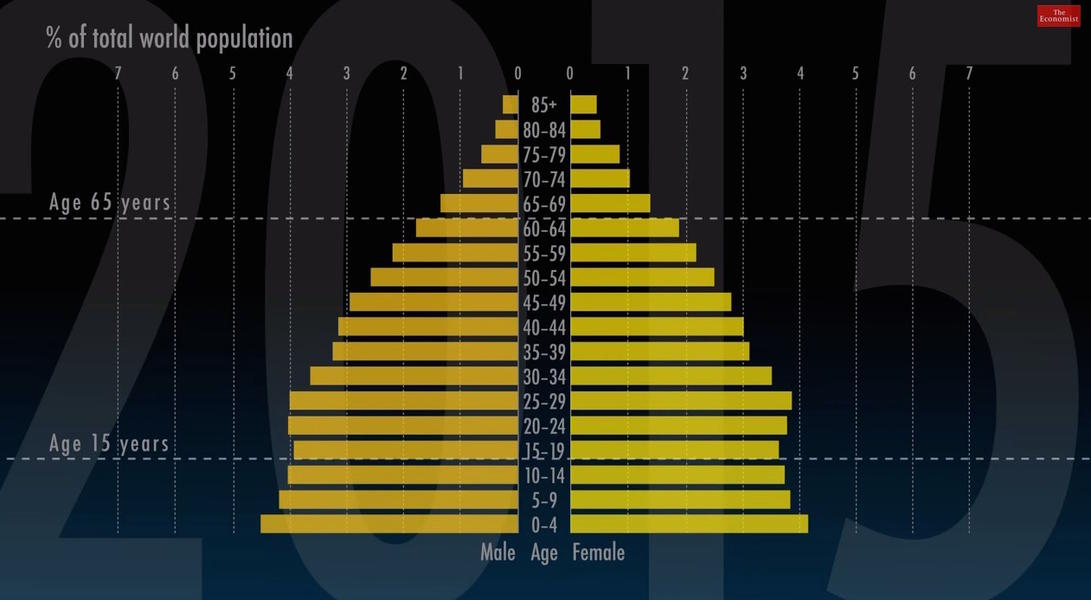Watch the world's age demography dramatically change shape from pyramid to column


Since humans started organizing into communities, the shape of any given society, broken into age groups and gender, has always resembled a pyramid: The largest age group has always been the youngest (0-4), and the oldest group (75+) has always been the smallest, with each age group in between falling in more or less a straight line, forming a triangle. But starting in 1975, The Economist explains, falling birth rates and rising lifespans have converted the triangle into a bell shape, or the profile of a temple at Angkor Wat.
The otherwise dry demographic data is really brought to life in the video below, and the really interesting (perhaps terrifying) shape-shift is projected to happen in the next 45 years. By 2060, the number of people 85 and above is set to mushroom by 281 percent, while the population of of people 60 to 79 is expected to double, adding 850 million — more than four times the growth of people 19 and younger, whose population will grow just 8 percent, by 200 million. The population pyramid will start to look like a column. If these World Bank projections prove accurate, human society will look very different, very soon. And you might well live to see it. --Peter Weber
A free daily email with the biggest news stories of the day – and the best features from TheWeek.com
The Week
Escape your echo chamber. Get the facts behind the news, plus analysis from multiple perspectives.

Sign up for The Week's Free Newsletters
From our morning news briefing to a weekly Good News Newsletter, get the best of The Week delivered directly to your inbox.
From our morning news briefing to a weekly Good News Newsletter, get the best of The Week delivered directly to your inbox.
Peter has worked as a news and culture writer and editor at The Week since the site's launch in 2008. He covers politics, world affairs, religion and cultural currents. His journalism career began as a copy editor at a financial newswire and has included editorial positions at The New York Times Magazine, Facts on File, and Oregon State University.
-
 Nobody seems surprised Wagner's Prigozhin died under suspicious circumstances
Nobody seems surprised Wagner's Prigozhin died under suspicious circumstancesSpeed Read
-
 Western mountain climbers allegedly left Pakistani porter to die on K2
Western mountain climbers allegedly left Pakistani porter to die on K2Speed Read
-
 'Circular saw blades' divide controversial Rio Grande buoys installed by Texas governor
'Circular saw blades' divide controversial Rio Grande buoys installed by Texas governorSpeed Read
-
 Los Angeles city workers stage 1-day walkout over labor conditions
Los Angeles city workers stage 1-day walkout over labor conditionsSpeed Read
-
 Mega Millions jackpot climbs to an estimated $1.55 billion
Mega Millions jackpot climbs to an estimated $1.55 billionSpeed Read
-
 Bangladesh dealing with worst dengue fever outbreak on record
Bangladesh dealing with worst dengue fever outbreak on recordSpeed Read
-
 Glacial outburst flooding in Juneau destroys homes
Glacial outburst flooding in Juneau destroys homesSpeed Read
-
 Scotland seeking 'monster hunters' to search for fabled Loch Ness creature
Scotland seeking 'monster hunters' to search for fabled Loch Ness creatureSpeed Read


